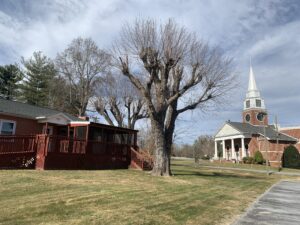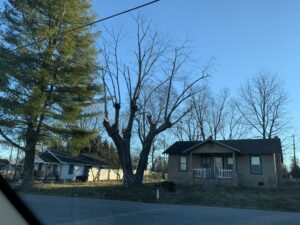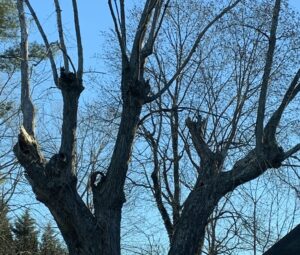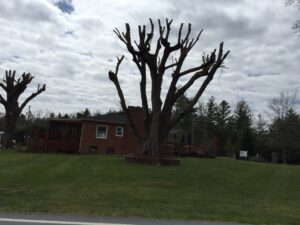Plant Health Alert – Avoid Topping Trees
go.ncsu.edu/readext?840843
en Español / em Português
El inglés es el idioma de control de esta página. En la medida en que haya algún conflicto entre la traducción al inglés y la traducción, el inglés prevalece.
Al hacer clic en el enlace de traducción se activa un servicio de traducción gratuito para convertir la página al español. Al igual que con cualquier traducción por Internet, la conversión no es sensible al contexto y puede que no traduzca el texto en su significado original. NC State Extension no garantiza la exactitud del texto traducido. Por favor, tenga en cuenta que algunas aplicaciones y/o servicios pueden no funcionar como se espera cuando se traducen.
Português
Inglês é o idioma de controle desta página. Na medida que haja algum conflito entre o texto original em Inglês e a tradução, o Inglês prevalece.
Ao clicar no link de tradução, um serviço gratuito de tradução será ativado para converter a página para o Português. Como em qualquer tradução pela internet, a conversão não é sensivel ao contexto e pode não ocorrer a tradução para o significado orginal. O serviço de Extensão da Carolina do Norte (NC State Extension) não garante a exatidão do texto traduzido. Por favor, observe que algumas funções ou serviços podem não funcionar como esperado após a tradução.
English
English is the controlling language of this page. To the extent there is any conflict between the English text and the translation, English controls.
Clicking on the translation link activates a free translation service to convert the page to Spanish. As with any Internet translation, the conversion is not context-sensitive and may not translate the text to its original meaning. NC State Extension does not guarantee the accuracy of the translated text. Please note that some applications and/or services may not function as expected when translated.
Collapse ▲‘Topping’ refers to the wholesale removal of most of the branches of a tree. Often this is done to make a tree less prone to blowing over in a wind storm or to prevent large limbs from falling on structures. However, the pruning does far more harm than good and is not recommended by tree experts. Often topping leads to tree rot, health decline and eventual death.

The same trees several years later. You can see the profusion of new growth. Eventually these new libs will become hazardous.
This removal of the photosynthetic part of the plant (food making leaves) stresses the tree. Replacing limbs is costly to a tree. New limbs will grow rapidly, often getting too long too fast and will eventually start breaking. This means tree owners will need to have the suckers pruned every few years costing money.

Trees that were topped long ago eventually rot because the large wounds made during topping never seal. Water, insects and fungi get inside the tree and rot the inner wood. Trees become weak and fall apart.
Cutting into older large diameter branches creates wounds that likely will never seal over. This exposes the inner wood of the tree to rotting fungi and wood feeding insects. The cut areas begin to rot and eventually cannot support the weight of the new limbs.

Trees that were topped long ago eventually rot because the large wounds made during topping never seal. Water, insects and fungi get inside the tree and rot the inner wood. Trees become weak and fall apart.
Canopy reduction can be achieved with responsible pruning. Up to 25% of a tree’s canopy can be removed. This can be done without cutting into the older bigger branches.

You can see how badly rotted this topped tree has become. This tree is dropping large limbs frequently.
Avoid topping trees at all costs. Every organization that is interested in trees (the International Society of Arboriculture, the American Horticultural Society, etc.) recommends avoiding topping. If a tree endangers your property, go ahead and remove it and invest in a new tree for the future.





